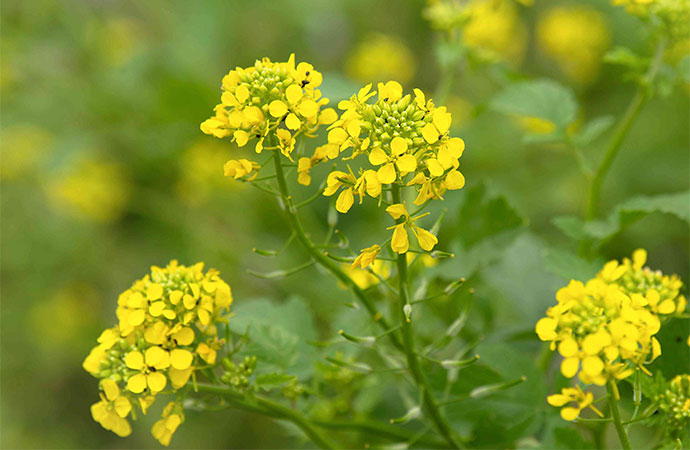Nature

Malkoha glides between trees. Photo: Enam Ul Haque
The green-billed Malkoha lives in all forests including the Sundarban and every village grove of Bangladesh. It is perhaps more common than our most common cuckoo, the Common Hawk Cuckoo
Our early morning venture into the sopping Satchhari National Park was rewarded with a soft, restrained call: 'koh... koh... koh'. Hastily, we hid behind a Chambal Tree as we knew it was the song of a secretive Green-billed Malkoha, our largest bird of the cuckoo family. We hoped to have a rare uncluttered view, and with luck, a few photographs of the stealthy bird.
And on that misty morning, we were more than lucky. A beautiful Malkoha struck its gorgeous head out of the thicket to check on a possible unwelcome intrusion. With deep dark eyes, it looked into the big black Nikon-lens and raised its facial feathers in alarm. The lens stayed unmoved and the bird lowered its hackles and moved on.
The reassured Malkoha went to sit on a reclining branch and raised its sodden feathers to dry in the light morning breeze. Its inexplicable long tail spanned nearly the whole tree. The day being dull, the beautiful blue-green shafts of its tail feathers, regrettably, did not attain the luminosity we would have been happy to see and photograph.
All cuckoos have long graduated tails, but the tail of Green-billed Malkoha is so excessively long that we cannot even begin to explain why! Curiously, there is no sexual dimorphism in the Malkoha; which meant that both the male and female sported those super long tail feathers. If only the male had the elaborate tail like many other birds, we could count that as a male adornment to seduce females.
The relaxed Malkoha started to preen its feathers at a leisurely pace giving us a rare opportunity to take a long look at it. Malkohas usually stay hidden in the foliage and we get to see them only for fleeting moments. But that princely bird on that dim morning at Satchhari was unusually free from care.
We estimated that the Green-billed Malkoha was around two feet from the tip of its bill to the tip of the tail. The central tail feathers could be no less than 15 inches long. A very long tail, obviously, needed a long time to preen; and we had no reason to interrupt its blissful grooming.
In Bangladesh, we have only one species of Malkoha, the Green-billed Malkoha, although two more species of Malkoha live in India. In the large family of cuckoos in the world, there are a mere 13 species of tropical birds named Malkoha and all of them live exclusively in East and Far-east Asia.
The name Malkoha, however, originated from the endemic species of Sri Lanka: The Red-faced Malkoha. The bare face of that bird is truly like a blood-red bloom. In the Sinhala language a flower is 'mal'; and a cuckoo is 'koha'. Therefore the Sri Lankan bird went by the name mal-koha, or flower-cuckoo.
The meticulous preening of the engrossed Green-billed Malkoha came to an end when a quarrel broke out among a troop of monkeys on the nearby trees. The Malkoha opened its broad and round wings to glide slowly into the scrub nearby and like a large squirrel crept through the foliage foiling our attempts to watch and photograph it for some more time.
Because of those broad and round wings, the Green-billed Malkoha dares to descend down to the scrub to hunt for the caterpillars and the worms it feeds on. When threatened by jackals, jungle cats or people it can quickly escape by beating those strong wings and flying up vertically like a missile.
Our Malkoha, however, did not disappear into the scrub for good. Soon it reappeared with a twig in its bill and sat on a teak branch to scan the forest for disagreeable creatures. The noble bird was clearly making a nest and did not wish to disclose the nest site to its enemies. Once sure that there were no onlookers the Malkoha flew into a huge Blackboard Tree.
Most birds of the cuckoo family do not make nests. Female cuckoos lay their eggs secretly in the nests of other birds and let them do the chores of incubation and chick-rearing. Unlike those cuckoos, the Green-billed Malkoha happily makes its own nest and enjoys raising a family.
In the game of survival, the Green-billed Malkoha has done pretty well indeed. It is considered the most widespread Malkoha of the Indian Subcontinent. It lives in all forests including the Sundarban and every village grove of Bangladesh. It is perhaps more common than our most common cuckoo, the Common Hawk Cuckoo.
The wise Malkoha has not fared too poorly by shunning the cuckoo-way of parasitising other birds. The mean practice of making some unsuspecting neighbours raise one's own offspring is not easy to pull off. We theorised that the persistent decline in the populations of many of our brood parasitic cuckoos may substantiate it.
The cuckoo perennially received bad publicity among humans merely because it adulterated others' nests. Humans drew a connection, albeit unjustifiably, between cuckoo and cuckoldry. Cuckoo became a contemptuous label for a man with an unfaithful wife. In his play, Love's Labors Lost the great English bard William Shakespeare wrote:
The cuckoo then, on every tree,
Mocks married men; for thus sings he: "Cuckoo;
Cuckoo, cuckoo!" O, word of fear,
Unpleasing to a married ear!
The connection between the cuckoo and cuckoldry is tenuous at best since a male cuckoo is rarely cuckolded by its female. They usually stay faithful to each other for the all-important breeding season. They merely give the egg to the care of strangers. Cuckoldry is a different game altogether; and very few birds, like the humans, are above it.
Nonetheless, we are happy to know that our Green-billed Malkoha is a diligent homemaker and does not practice brood parasitism. We want the good bird to be above that unmerited stigma and wish it to thrive in all our village groves as well as our forests.
Enam Ul Haque is the Chairman of WildTeam. First Published in The Business Standard.

























Leave a Comment
Recent Posts
Showcasing tradition, creative ...
With a commitment to reviving traditional crafts and fostering creativ ...
Gallery Cosmos hosts special s ...
Celebrating a vibrant winter evening of cinematic art and storytelling ...
Logic of interdependence, mutual benefit to keep gui ..
The most important deliverable on the IG’s plate
All 64 people aboard an American Airlines jet were k ..
Tensions between Dhaka University and its seven affi ..